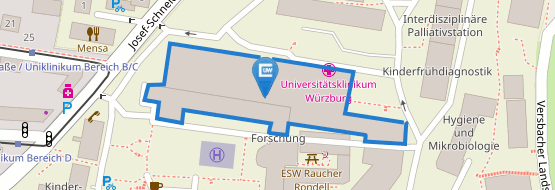A18 - Braun
The role of platelet Mg2+ channels in thrombosis and haemostasis
Summary:
Elevation of the intracellular Ca2+ concentration ([Ca2+]i) is a central event during platelet activation. We have identified the Ca2+ sensor stromal interaction molecule 1 (STIM1) and the Ca2+ channel proteins Orai1 and TRPC6 as key regulators of Ca2+ homeostasis in platelets, and provided evidence that blocking of Ca2+ signalling in platelets might become a promising antithrombotic approach. On the other hand, it has been known for more than 50 years that Mg2+ is a natural antagonist of Ca2+ signalling and altered Mg2+ homeostasis is described in many cardiovascular diseases, especially in patients with coronary heart disease, arrhythmias, acute myocardial infarction, hypertension and stroke. We hypothesise that the abnormal function of Mg2+ channels may contribute to the development of aberrant Ca2+ homeostasis in platelets thereby inducing abnormal platelet activation and a pro-thrombotic phenotype in vivo. Although Mg2+ entry has been described in megakaryocytes (MKs) and platelets, the molecular composites of Mg2+ channels and their signalling functions are unknown.
In preliminary studies, we have identified TRPM7 channel and MagT1 transporter to be expressed in murine platelets and started to analyse their functions in MKs and platelets under normal and pathological conditions using knock-out (MagT1-/-, Trpm7fl/fl Pf4-Cre) and knock-in (Trpm7ΔKIN) mouse models. First results show that the Trpm7ΔKIN mutation, which deletes the kinase activity of TRPM7, causes a marked Ca2+ signalling defect downstream of GPVI activation in platelets resulting in defective thrombus formation under flow and protection of Trpm7ΔKIN mice in models of arterial thrombosis and ischaemic stroke.
In a second part of the project, we want to study the effect of hypomagnesaemia on megakaryopoiesis and platelet function in vivo. For these studies we intend to use Trpm6-/- mice, which develop severe hypomagnesaemia 6-10 weeks after birth. This in vivo model will provide important information on how the blood Mg2+ concentration influences platelet function in vivo.

